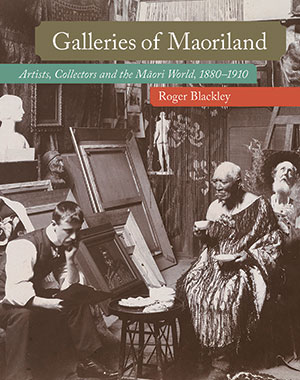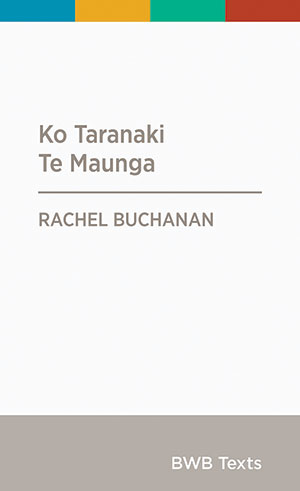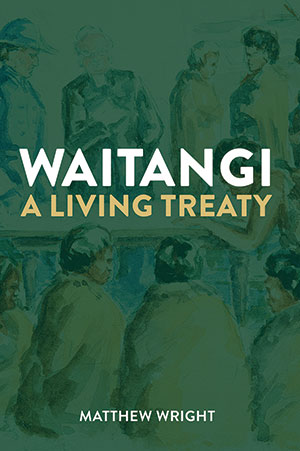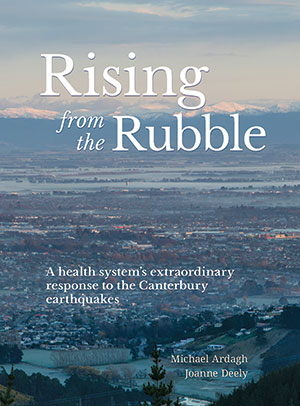Reviews Books
Mar 31, 2019

Galleries of Maoriland: Artists, Collectors and the Māori World, 1880-1910
Nā Roger Blackley
Auckland University Press
RRP: $75.00
Review nā Megan Tamati-Quennell
 Roger Blackley’s Galleries of Maoriland is an important new book that focuses on the art of the colonial period in New Zealand and the cultures of Maoriland. Maoriland is, Blackley says, as much a period as it is a place. It is an obsolete name for New Zealand that was coined by the Sydney-based Bulletin, a publication of the period, and is a code word for the colonisation of Aotearoa. It can also be understood as an idealised notion of Māori culture.
Roger Blackley’s Galleries of Maoriland is an important new book that focuses on the art of the colonial period in New Zealand and the cultures of Maoriland. Maoriland is, Blackley says, as much a period as it is a place. It is an obsolete name for New Zealand that was coined by the Sydney-based Bulletin, a publication of the period, and is a code word for the colonisation of Aotearoa. It can also be understood as an idealised notion of Māori culture.
In Galleries of Maoriland Blackley introduces us to “the many ways in which Pākehā discovered, created, propagated, and romanticised the Māori world.
“Māori and their cultures were textualised by Pākehā, so the colonists could ‘know’ who they were displacing. It is not too much to say that colonists produced (or invented) “the Māori”, making them picturesque, quaint, largely ahistorical, and, through printed materials, manageable…”
Galleries of Maoriland explores ethnological art from the turn of the century; Māori objects, often referred to in the period as curios; and images of Māori, portrait paintings from artists such as Gottfried Lindauer and Charles F Goldie, now frequently revered by Māori as portraits of beloved tūpuna. In his writing Blackley highlights how this art – taonga Māori and images of Māori – collected by historical figures like Sir George Grey (described as the godfather of ethnological collecting in New Zealand) and trader/military man Gilbert Mair – formed the basis of many museum collections within the country.
The collections of Sir George Grey, who was a colonial soldier, explorer, scholar and New Zealand Governor, were largely made up of taonga received as gifts from rangatira; but also included paintings he commissioned to honour key colonial events, as well as books and manuscripts. Blackley described Grey’s collections as encyclopaedic, and as an important tool of his governorship.
In Galleries of Maoriland Blackley surveys the collecting and exhibiting culture of the colonial period. He unpacks how Māori objects and Māori subjects were captured and presented, and critiques the ethnographic economy and history of the time. As a specialist in colonial New Zealand art, an art historian, a curator who had a 15-year career at Toi o Tāmaki Auckland Art Gallery, and a lecturer in Art History at Victoria University, Blackley was well placed to research and write this book. Drawing on his background as a curator, Blackley sets out Galleries of Maoriland like an exhibition would be realised. The first chapter focuses on curios and exhibitions, and explores how taonga Māori were used to provide an exotic pre-history to colonial modernity. His second chapter looks at colonial archaeology and the work of geologist and founder of the Canterbury Museum, Julius Von Haast.
The third chapter explores Māori portraiture, the romanticising of Māori within that tradition, and Māori agency in relationship to portraiture, which was active and strong. Māori were involved in the production, collection, and display of portrait paintings. Blackley reinforces that Māori weren’t just the passive subjects of paintings by Pākehā artists. We instead were often implicit in the construction of images and how we were portrayed. Also, once Māori knew they could control their image, we commissioned artists like Lindauer to create portraits for our own purposes.
Blackley discusses Māori portraiture in a new way, viewing it as “a corrective”; art that was valued and useful for Māori, and adopted and incorporated by Māori into ceremony, including the most significant of Māori ceremonies, that of the tangihanga.
Other chapters explore the gifting of taonga as a fundamental mode of Māori behaviour, and the difference in Māori and Pākehā ideologies related to gifting. Blackley also touches on subjects such as grave robbing, a feature of many New Zealand museum collections; and the faking of taonga Māori, some of which are authenticated by Māori and used within the culture.
Galleries of Maoriland is a fascinating book, which provides a grounding in some of the beginnings of ethnology and art in New Zealand, as well as museum and art gallery collections and the history and ideologies behind their use, display, and exhibition. It reveals new information about Māori participation in colonial culture, and in the creation of notions like Maoriland. Through Galleries of Maoriland, Blackley looks at the complexity of our cross-cultural relationships. He highlights that Māori engagement was more than just being object and subject, and that our relationship with Maoriland and the curio culture was more complicated than the ascribed position of degeneration and loss.
Galleries of Maoriland reveals that our engagement in colonial art was diverse, multifarious and significant. Blackley’s research reinforces that Māori had agency and that our involvement did temper and shape our representation in this context.
 Megan Tamati-Quennell (Ngāi Tahu) is the Curator of Modern & Contemporary Māori & Indigenous Art at Te Papa. She lives in Wellington with her son, Taniora.
Megan Tamati-Quennell (Ngāi Tahu) is the Curator of Modern & Contemporary Māori & Indigenous Art at Te Papa. She lives in Wellington with her son, Taniora.
Ko Taranaki Te Maunga
Nā Rachel Buchanan
Bridget Williams Books 2018
RRP: $14.99
Review nā Gerry Te Kapa Coates
 Ngāi Tahu have an enduring connection with Taranaki Māori through Parihaka and the imprisonment and exile of Te Whiti and the ploughmen in Te Waipounamu. In this book Rachel Buchanan tells her deeply personal story of the effects from these events on her family – and father in particular – leading up to the colonial government’s actions and subsequent denial of justice that was the Parihaka story. The book is both memoir and personal history sitting alongside factual information and analysis of the events, then and later with the Crown Treaty settlements and the many apologies to Taranaki iwi. The author had written and had published an essay called ‘Beating Shame: Parihaka and the Very Long Sorry’ and she refers to this as “an engine” that made many things happen for her. Living in Melbourne, a framed photograph of maunga Taranaki on her desk, and doing research while her father Leo (Te Āti Awa-Taranaki), the family archivist, was dying back in Wellington. In her dad’s filing cabinet she finds “eighty years of non-violent protest against colonisation” – her family’s passive resistance to the events.
Ngāi Tahu have an enduring connection with Taranaki Māori through Parihaka and the imprisonment and exile of Te Whiti and the ploughmen in Te Waipounamu. In this book Rachel Buchanan tells her deeply personal story of the effects from these events on her family – and father in particular – leading up to the colonial government’s actions and subsequent denial of justice that was the Parihaka story. The book is both memoir and personal history sitting alongside factual information and analysis of the events, then and later with the Crown Treaty settlements and the many apologies to Taranaki iwi. The author had written and had published an essay called ‘Beating Shame: Parihaka and the Very Long Sorry’ and she refers to this as “an engine” that made many things happen for her. Living in Melbourne, a framed photograph of maunga Taranaki on her desk, and doing research while her father Leo (Te Āti Awa-Taranaki), the family archivist, was dying back in Wellington. In her dad’s filing cabinet she finds “eighty years of non-violent protest against colonisation” – her family’s passive resistance to the events.
Before the wars, she says “Taranaki was hollowed out by the cycle of fighting and retribution that began with the 1821 arrival of a large taua (war party)” from up North. This conflict left trails of utu debt, ripe for later revenge with muskets, although the author says that “even without guns we Taranaki people did our share of killing and mocking.” Māori fled south to Te Whanganui-a-Tara (Wellington) to escape the carnage, as exiles just at the time of the first New Zealand company ships arrived and the “land was cut up like a cake.” As the Pākehā settlement of Wellington gathered momentum, Taranaki Māori began to return to their ancestral homes, hastened by earthquakes in 1848 and 1855. Not surprisingly they found the Taranaki they returned to “greatly changed.” The pressure on Māori land was unrelenting, and despite a pledge by committed Māori who “swore no more land would be sold” some Māori went and sold anyway.
In March 1860 surveyors entered land ‘sold’ at Waitara but were turned away by the tangata whenua resulting in war between the British and the Te Āti Awa people. Conflict with settlers still arose, resulting in more retribution from imperial troops who “destroyed every cultivation within 20 miles south of New Plymouth.” She reports that “the enraged colonial government wanted to be emphatic. How dare these people keep fighting back?” The New Zealand Settlements Act was used to confiscate all of what was called ‘middle Taranaki’ or 560,000 acres and a further 854,000 acres to the north and south-east. “Even the mountain (Taranaki) was taken.”
By 1865 the two new leaders, Te Whiti o Rongomai and Tohu Kākahi, were con-secrated at Parihaka and, assisted by Ngāti Ruanui rangatira Titokowaru, led the non-violent resistance. The kaupapa of non-violence was a pragmatic stance as by 1866 Māori were “radically outnumbered by well-armed soldiers and settlers.” The Crown used other ploys – which would be familiar to Ngāi Tahu – ignoring an understanding that no more land in the Taranaki rohe would be made available to settlers until reserves were provided for local Māori. No reserves were set aside. In May 1879 Te Whiti began ploughing land that had been occupied by settlers, with a predictable retaliation.
In its settlements with iwi, the Crown included apologies for the wrong that was perpetrated against Taranaki tribes. Between 1991 and 2018 nine apologies were made to Taranaki iwi. The author says there is a disconnect between what the Crown now says about the past and what non-Māori people say about it inside their homes, calling it “a gap between national history and domestic history” that needs closing or Parihaka will remain on the margins. She believes that it is Māori, not Pākehā who have been overwhelmingly and unfairly burdened by shame as a result of invasion, plunder and confiscation. What relevance do apologies have in any redress? Officially they redress the balance between the casual dismissals of the past, and the Crown now accepting responsibility for historical grievances.
It is also true that The Apology is only symbolic. Australian philosopher Janna Thompson says that apologies are a poor response to the enormity of the injustices that were committed. “We took your lands; we stole your children. Sorry about that.” Attorney-General Chris Finlayson reminded an audience at Parihaka that “these things did occur. That is why they must be recorded and remembered … Ultimately there can be no reconciliation where one party remembers and the other forgets.” According to the author forgetting is one way of avoiding suffering but it comes at great cost. She poses a question finally “will people step up now and take the time to learn now and feel the history of the places they call home?” This is a thoughtful and intimate book that will steer readers to other sources dealing more fully with the history and effects of colonisation that are still there as non-Māori fail to accept the historical reasons why Māori still suffer under the fallout from history.
 Gerry Te Kapa Coates (Ngāi Tahu, Waihao) was born in Ōāmaru, and has had poems, book, and theatre reviews and stories in Huia Short Stories collections 4, 5, and 7; and other publications including Landfall, Mana magazine and Ora Nui 3, as well as a wide variety of non-fiction espousing environmental issues, amongst other themes. His collection of poems and short stories from 1961–2011, The View From Up There, was published by Steele Roberts. Gerry was a panellist at the 2013 Christchurch Writers and Readers Festival. He also works as a consultant and commissioner on RMA and similar EPA hearings, as well as being an author and doing Māori and technology advisory work.
Gerry Te Kapa Coates (Ngāi Tahu, Waihao) was born in Ōāmaru, and has had poems, book, and theatre reviews and stories in Huia Short Stories collections 4, 5, and 7; and other publications including Landfall, Mana magazine and Ora Nui 3, as well as a wide variety of non-fiction espousing environmental issues, amongst other themes. His collection of poems and short stories from 1961–2011, The View From Up There, was published by Steele Roberts. Gerry was a panellist at the 2013 Christchurch Writers and Readers Festival. He also works as a consultant and commissioner on RMA and similar EPA hearings, as well as being an author and doing Māori and technology advisory work.
Waitangi: A Living Treaty
Nā Matthew Wright
David Bateman 2019
RRP: $39.99
Review nā Te Hau White
 Waitangi: A Living Treaty is a book that explores the social norms and constructs up to, during, and following the signing of the Treaty of Waitangi. This book analyses the context of the Treaty, rather than the content, and does not isolate it to the 1800s.
Waitangi: A Living Treaty is a book that explores the social norms and constructs up to, during, and following the signing of the Treaty of Waitangi. This book analyses the context of the Treaty, rather than the content, and does not isolate it to the 1800s.
It is a whistle-stop tour through some of the more significant events in the history of Aotearoa, and does not limit itself to events and people directly related to the Treaty – a fact that differentiates this book from others. A lion’s share of the book focuses on the period leading up to the signing of the Treaty, but also progresses through to the impacts in the modern day; which is what I found most compelling and interesting. This approach allows for an assessment of wider holistic and societal changes, and juxtaposes these against the place of the Treaty and how it was viewed by the society of the day.
The historical context is also compared to interesting international factors and the influences of trade, capitalism, and colonialism. This is an underappreciated aspect of the Treaty and New Zealand history, and the author’s insights add depth to the conversation. Much has already been said about the influence of the British and other colonial powers, but this book also focuses on the motivations of individuals, such as Lieutenant Governor William Hobson, Lieutenant Thomas McDonnell, former Prime Minister Robert Muldoon, and Matiu Rata.
This book is also, by Wright’s admission, a critique of the wider historical dialogue surrounding the Treaty. He strongly argues that both past and present historians have leaned too heavily on either a Pākehā or Māori perspective. Despite his acknowledgement of this point, Wright’s book is still placed squarely within a Pākehā construct. It shows a solid understanding of te ao Māori, but does reach in some occasions regarding the motivations and perspectives of te ao Māori. This does not detract from the book, but means that it should be complemented with other Māori perspectives.
Overall this book is an interesting take on the Treaty as a social construct, rather than simply an agreement made at a fixed point in time. However, I would view this as a complementary read, as it did not discuss the content of the Treaty in depth. This was most likely Wright’s intent, and therefore a basic understanding of the content of the Treaty will enhance the reading experience.
This book really explores new ground through the concept of the Treaty as an evolving and ever-present influence in our society. We often hear detractors arguing ad nauseum that the Treaty only holds relevance in its own time. This book thoroughly dismisses that notion, and convincingly demonstrates how the Treaty has evolved based on the New Zealand experience. Another solid contribution to the history of the Treaty and its place in our nation’s history.
 Te Hau White (Ngāi Tahu – Ngāti Huirapa – Ngāi Tūpoto) is a Policy Adviser at Te Rūnanga o Ngāi Tahu. He was raised in Ōtautahi and Hokianga.
Te Hau White (Ngāi Tahu – Ngāti Huirapa – Ngāi Tūpoto) is a Policy Adviser at Te Rūnanga o Ngāi Tahu. He was raised in Ōtautahi and Hokianga.
Rising from the Rubble: A health system’s extraordinary response to the Canterbury earthquakes
Nā Michael Ardagh and Joanne Deely
Canterbury University Press 2018
RRP: $39.99
Review nā Robyn Wallace
 Much has been written about the many faces of the Canterbury earthquakes. However, there is an apparent lack of information about the health sector.
Much has been written about the many faces of the Canterbury earthquakes. However, there is an apparent lack of information about the health sector.
Written by Michael Ardagh – Prof. Emergency Medicine University of Otago Canterbury and Joanne Deely – independent scientist and researcher for Canterbury District Health Board, this is a collection of human stories and experiences acknowledging the journey of responders and casualties following the 2010 and 2011 earthquakes.
It is common following a disaster for ordinary people to perform extraordinary acts, to go above and beyond their normal duties in order to help others, often putting themselves in danger. Clinical, non-clinical staff and those working in the community were no different. Deeds; courageous and unseen in the face of uncertainty ensured ministering to the bruised, battered, bewildered and broken continued during and after the event.
Eight years on, there is a marked increase in mental illness and health interventions are more complicated for affected people, across a population that has grown faster than anyone predicted. It’s obvious, recovery is going to take a long time.
The impressive Māori community response contribution is covered in Chapter 12 with the writer recommending that greater attention should also be placed on the “response to” Māori needs and the integration of cultural responsiveness in emergency planning. Pre-earthquake the Māori population carried a disproportionate burden of poor health than non-Māori. This was exacerbated post-earthquake as higher numbers of Māori lived in the hardest hit area of east Christchurch, loss or reduced employment further affected already low incomes, creating additional barriers to access crucially needed health services. It’s encouraging to hear that lessons learnt from this Canterbury experience has informed others including the United Nations, regarding disaster risk management for indigenous people elsewhere.
Finally health funding – government bureaucrats making funding decisions in Wellington based purely on population numbers, with no understanding of the toll post-disaster effects have on people’s wellbeing over the long term, has applied additional pressure to a straining system.
The reader is left in no doubt of the huge challenges to overcome and massive role played by those that worked in health keeping buildings and services operational following the 22nd February 2011 earthquake sequences, continuing to the present day.
This book recounts real life stories, taking the reader on a journey that swoops down and into the multi-faceted world of the health community, revealing a cornerstone piece in our community jigsaw and the players that kept the engines running.
 Robyn Wallace (Ngāi Tahu – Ngāi Tūāhuriri, Ngāti Kurī, Ngāi Te Ruahikihiki) is the Director – Earthquake Response & Recovery at Te Rūnanga o Ngāi Tahu. Before this she worked at He Oranga Pounamu and Community & Public Health. She lives in Kaiapoi with her husband Andrew, has two grown children and three delicious mokopuna.
Robyn Wallace (Ngāi Tahu – Ngāi Tūāhuriri, Ngāti Kurī, Ngāi Te Ruahikihiki) is the Director – Earthquake Response & Recovery at Te Rūnanga o Ngāi Tahu. Before this she worked at He Oranga Pounamu and Community & Public Health. She lives in Kaiapoi with her husband Andrew, has two grown children and three delicious mokopuna.
Opinions expressed in REVIEWS are those of the writers and are not necessarily endorsed by Te Rūnanga o Ngāi Tahu.
.